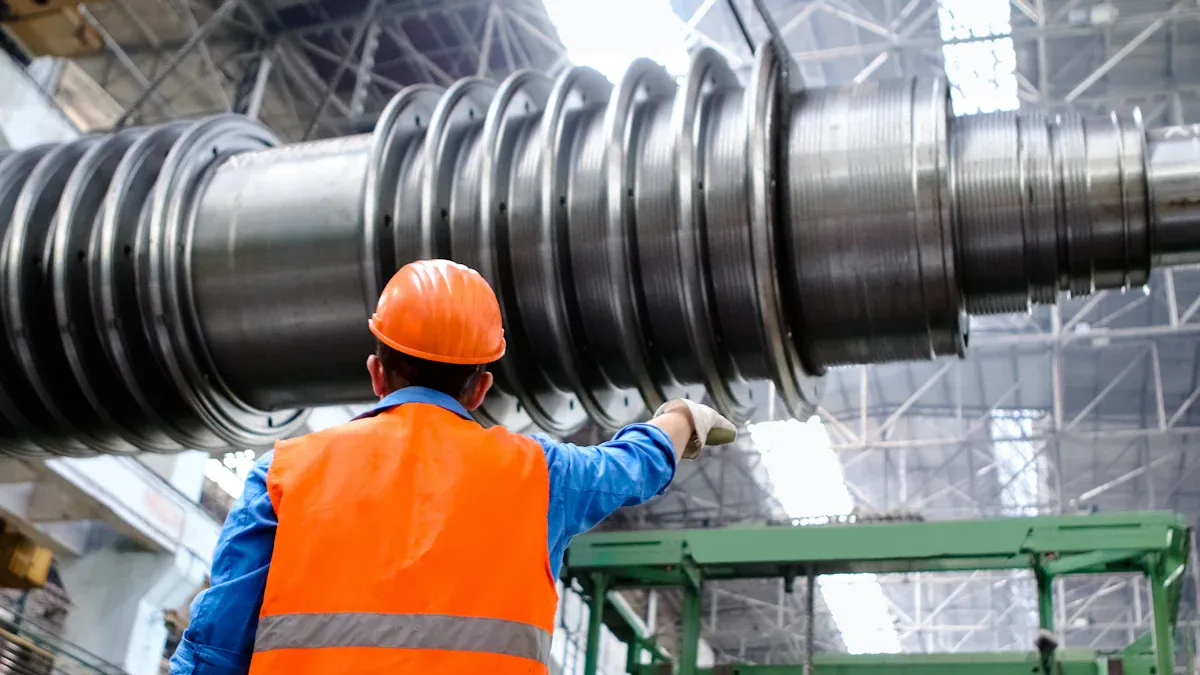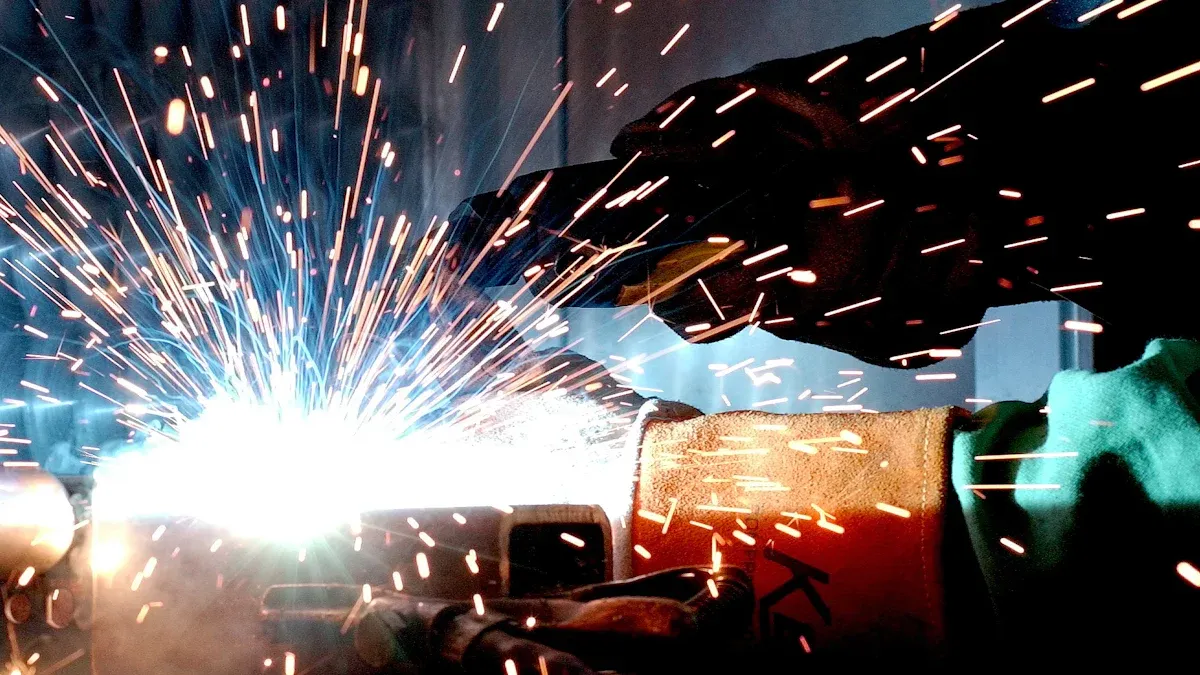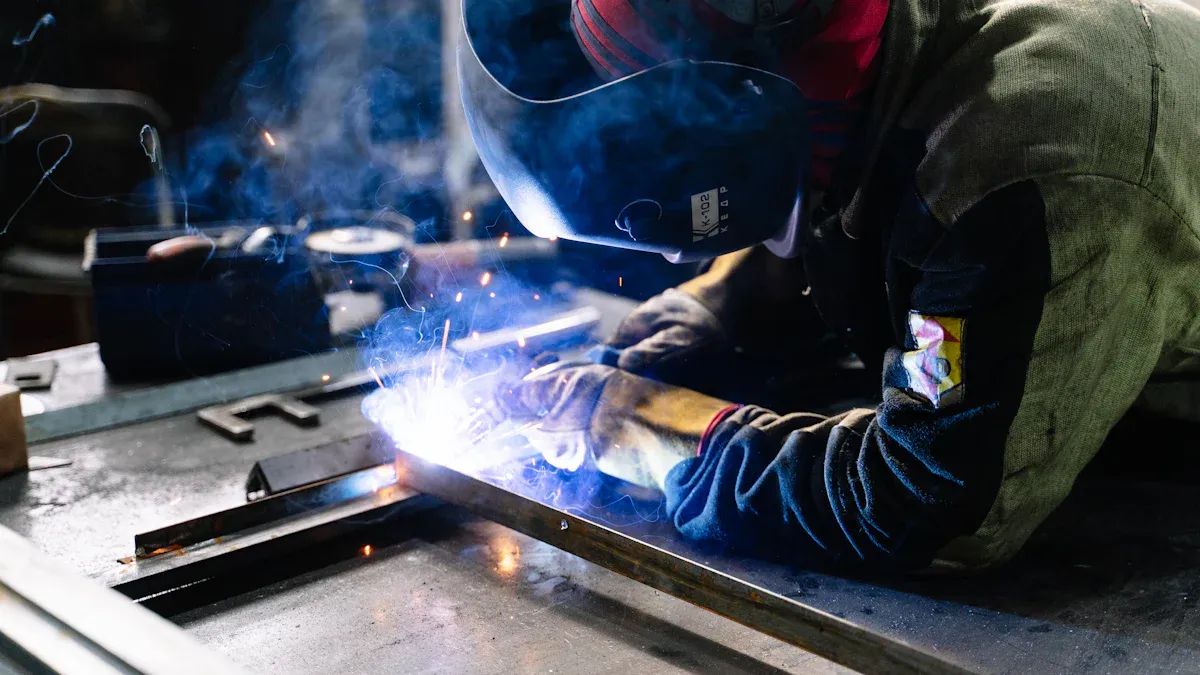Welded vs Seamless Nitinol Tubing for Medical Use

When picking welded or seamless nitinol tubing for medical tools, think about their features and how they work. Seamless tubes are great for precise tools like stents in blood vessels. Welded nitinol tubing costs less and works for simpler tasks. Knowing these differences helps you choose the best one for your needs.
Key Takeaways
Seamless nitinol tubing is tough and bends easily. It works well for advanced medical tools like stents and catheters.
Welded nitinol tubing costs less and is made faster. It is good for simple tools like guidewires but may not last as long as seamless tubing.
When picking tubing, think about strength, price, and what your medical tool needs to work best.
What Is Nitinol Tubing?
Overview of Nitinol and Its Properties
Nitinol is a special metal made of nickel and titanium. It is unique because of its amazing features, especially for medical use. You might ask, "What makes nitinol so special?" One cool thing is it can "remember" its shape. Even if bent or squished, it goes back to its original form. This is called shape memory and is important for tools like stents and surgical devices.
Another great feature is superelasticity. Nitinol can bend and stretch but won’t break. This helps it work well in tight or curvy spaces, like blood vessels. Plus, nitinol is safe for the body, meaning it doesn’t cause bad reactions. It also resists rust, so it stays strong and safe over time, even in places like the bloodstream.
Here’s a simple list of nitinol’s features:
Property | What It Does |
|---|---|
Shape Memory | Goes back to its shape after bending, great for medical tools. |
Superelasticity | Bends easily without breaking, perfect for tricky surgeries. |
Biocompatibility | Safe for the body, good for implants. |
Corrosion Resistance | Stays strong and safe for a long time. |
Role of Nitinol Tubing in Medical Applications
Nitinol tubing is very important in modern medicine. Its strength and flexibility make it great for many medical tools. For example, nitinol stents help fix blocked arteries. These stents can stretch and fit the shape of blood vessels. This lowers the chance of problems like re-blocking. Studies show nitinol stents often work better than regular metal ones, helping patients recover faster.
Nitinol tubing is also used in surgical tools. Its shape memory and superelasticity keep tools precise during hard surgeries. Since nitinol is safe for the body, implants made from it are good for long-term use. Whether it’s a stent, catheter, or guidewire, nitinol tubing is reliable and works well for important medical needs.
Why nitinol tubing is great for medicine:
Super flexible and strong for tough jobs.
Handles lots of bending and use without breaking.
Helps patients heal better, especially in artery treatments.
Nitinol tubing’s special features make it a must-have for improving medical tools and patient care.
Seamless Nitinol Tubing

How Seamless Tubes Are Made
Seamless nitinol tubing is made with a special method. A solid nitinol rod is heated and stretched into a hollow tube. This process, called extrusion, avoids welded joints. It removes weak spots and makes the tube even. Afterward, the tube is treated to boost its strength and flexibility. The result is a smooth, strong, and dependable product.
These tubes are made carefully to meet strict medical rules. Without welds, there’s less chance of flaws. This makes seamless tubing perfect for safe and high-performing medical uses.
Main Features of Seamless Tubing
Seamless tubing is strong and very flexible. Its smooth surface works well in tough conditions. It resists wear and handles repeated use without breaking. Its even structure makes it last longer.
It also keeps shape memory and superelasticity. These features help it fit the human body. The smooth finish ensures accuracy, which is key for tools like stents and catheters.
Safe Use and Medical Benefits of Seamless Tubes
Seamless tubing is safe for the body and doesn’t cause bad reactions. This makes it great for implants and long-term medical tools. It’s used in stents, guidewires, and surgical devices. The smooth surface lowers friction, helping in delicate tasks.
In medicine, seamless tubing is very reliable. Its strength, flexibility, and safety make it vital for life-saving tools. Whether for a stent or catheter, seamless tubes work well and keep patients safe.
Welded Nitinol Tubing
How Welded Nitinol Tubing Is Made
Welded nitinol tubing is made with special methods for accuracy. First, a laser cuts the material with very little heat. This prevents cracks and keeps the tube strong. But the cutting leaves the surface rough, which can weaken it. To fix this, the tube is polished using electricity. This makes the surface super smooth and stronger. These steps ensure the tubing is safe and reliable for medical use.
Important Features of Welded Tubing
Welded nitinol tubing has special qualities for medical tools. Tests show it is very strong, with stress levels up to 550 MPa. However, it doesn’t have the same flexibility as seamless tubing. Stress tests reveal welded tubes can bend or break differently. Tubes made from similar materials bend more, while mixed materials may break easily. Careful manufacturing is needed for the best results.
Test Type | What It Shows | Key Results |
|---|---|---|
Hardness Tests | Done on welded samples with specific settings. | Stronger tubes when welded on the stainless steel side. |
Tensile Strength (UTS) | Tubes welded on steel side showed highest strength. | Reached stress levels up to 550 MPa but lacked flexibility plateau. |
Stress Tests | Compared bending and breaking in different materials. | Mixed materials broke easily, while similar ones bent without breaking. |
Safety and Uses of Welded Tubing
Welded nitinol tubing is safe for the body and doesn’t cause harm. The smooth surface lowers irritation and bad reactions. This makes it good for catheters, guidewires, and other tools. While not as strong as seamless tubes, it costs less and works well for simpler tasks. Welded nitinol tubing is a dependable choice for many medical needs.
Welded vs Seamless: Key Differences

Manufacturing Process Comparison
Seamless tubing starts as a solid nitinol rod. It is heated and stretched into a hollow tube. This process makes it smooth and strong without welds. Welded tubing begins as a flat sheet of nitinol. The sheet is rolled into a tube and welded along the seam. Welds can create weak spots if not treated properly.
Mechanical Properties and Durability
Seamless tubing is very strong and flexible. It bends and stretches many times without breaking. Welded tubing is strong but less durable than seamless tubing. The welded seam can weaken the tube under stress. New welding methods have made welded tubes more reliable.
Cost and Production Efficiency
Seamless tubing costs more because it’s harder to make. Welded tubing is cheaper and faster to produce. If you don’t need extreme durability, welded tubing saves money.
Performance in Medical Applications
Seamless tubing is best for tools like stents and catheters. These need strength and flexibility to work well. Welded tubing is good for simpler tools like guidewires. Knowing your needs helps you pick the right tubing.
Pros and Cons of Welded and Seamless Tubing
Advantages and Disadvantages of Seamless Tubes
Seamless nitinol tubing is great for advanced medical tools. Its uniform structure makes it strong and flexible. It can bend many times without breaking. This is why it works well for stents and catheters. No welds mean fewer weak spots, lowering the chance of failure. Its smooth surface helps with accuracy and reduces friction, which is key for delicate tasks.
But seamless tubing has some downsides. Making it takes time and is expensive. This can be a problem if you have a tight budget. Also, it’s harder to make custom sizes, which limits its use in some cases.
Tip: Pick seamless tubing for tools that need strength and reliability.
Advantages and Disadvantages of Welded Nitinol Tubing
Welded nitinol tubing is cheaper and faster to make. This makes it a good choice for simpler tools like guidewires. New welding methods have made it stronger and smoother. It is safe and meets medical standards.
However, welded seams can be weak under high stress. This makes it less durable than seamless tubing. It’s also not as flexible, so it’s not ideal for tools that need precise bending.
Note: Welded tubing is best for basic tools where saving money matters.
Choosing the Right Tubing for Medical Applications
Things to Think About (e.g., strength, price, type of use)
Picking the right nitinol tubing for medical tools needs careful thought. You must check if the tubing fits your device's needs. Below are the key points to consider:
Strength and Durability: The tubing should handle pressure without breaking. Seamless tubing is stronger and more flexible for tough jobs.
Cost Efficiency: Seamless tubing works great but costs more. Welded tubing is cheaper and good for simpler tools. Think about your budget and the tool's purpose.
Application Suitability: The tubing should match what the tool needs. Stents need to be flexible and safe for the body. Guidewires may focus on being affordable and simple.
Supplier Capabilities: Choose suppliers with good skills and certifications like ISO 13485 or ASTM F2063. These ensure the tubing is safe and meets medical rules.
Property | What It Means |
|---|---|
Tensile Strength | Shows how much stress the tubing can take. |
Cost Efficiency | Balances price with features like rust resistance. |
Application Suitability | Makes sure the tubing fits the tool's specific needs. |
Tip: Always check if the supplier follows safety and quality rules.
Knowing how welded and seamless nitinol tubing differ is important. Seamless tubing is stronger and more flexible than welded tubing. Welded tubing, however, is cheaper and good for simpler tools. Always choose tubing based on what your device needs. For important tools like stents, seamless tubing is the best choice. Welded tubing is fine for basic uses.
FAQ
What makes welded and seamless nitinol tubing different?
Seamless tubing has no seams, so it’s stronger and bends better. Welded tubing has seams, which can make it less strong. But it costs less and works for easier jobs.
Can implants use welded nitinol tubing?
Yes, welded tubing can be used in implants. But seamless tubing is better for implants needing more strength and bending ability. Its smooth structure makes it a top choice.
How do I pick the best tubing for my device?
Think about what your device needs. Seamless tubing is great for tough tools like stents. Welded tubing is good for simple tools like guidewires, especially if you want to save money.
See Also
The Manufacturing Process of Nitinol Tubing for Medicine
Nitinol Tubing's Impact on the Future of Medical Devices
The Importance of Nitinol Tubing in Modern Medical Uses
Investigating Nitinol Tubing Uses in Healthcare Technology
Nitinol Tubing's Contribution to Progress in Medical Technology

